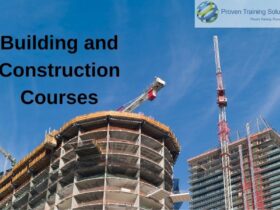Reggio Emilia vs Bilingual Preschool Models

Parents in the city-state’s highly competitive preschool landscape are increasingly faced with choosing between progressive learning philosophies and conventional educational structures. One such decision involves weighing the Reggio Emilia approach in Singapore against traditional bilingual preschool models. Both claim to nurture young minds and support language development, but they differ fundamentally in pedagogy, classroom dynamics, and the child’s role in learning. Understanding these differences helps parents make informed decisions aligned with their child’s learning style and developmental needs.
Curriculum Philosophy and Structure
Traditional bilingual preschools typically follow structured curricula, often aligned with frameworks set by the Ministry of Education (MOE). These preschools implement scheduled lessons in English and a second language, commonly Mandarin, through teacher-led instruction. Lesson plans are standardised, focusing on academic readiness in literacy, numeracy, and language milestones. Assessment tends to be outcome-based, with children expected to meet clear targets at each developmental stage.
In contrast, the Reggio Emilia approach is not curriculum-driven but philosophy-led. This model, rooted in child-directed exploration, treats children as active participants in shaping their own learning. Language acquisition occurs naturally through real-life experiences, project work, and interactions within a linguistically rich environment. The absence of rigid lesson plans allows bilingual development to unfold organically, particularly through storytelling, role-play, and peer dialogue in both languages.
Classroom Environment and Teacher Role
Classrooms in a traditional bilingual preschool are often arranged in rows or group tables, with a clear front-facing orientation that places the teacher at the centre. The teacher’s role is instructional, guiding children through a fixed daily schedule and language drills. Materials are pre-selected and used repeatedly to reinforce concepts.
By contrast, Reggio Emilia-inspired classrooms are designed as “third teachers”—spaces that provoke inquiry. These environments are typically open-concept, filled with natural light, loose parts, and child-created displays. The teacher takes on a facilitator role, observing rather than directing. They support bilingualism by responding to the child’s curiosity in both languages, rather than alternating between “English time” and “Mandarin time.” Teachers document observations instead of administering formal tests, which leads to personalised learning journeys.
Parental Involvement and Community Integration
Traditional bilingual preschools may involve parents through quarterly reports, school concerts, and occasional parent-teacher meetings. Parental involvement is generally limited to reinforcement of language skills at home or preparing the child for assessments.
The Reggio Emilia approach actively views parents as co-educators. Communication is ongoing, and parents are encouraged to participate in classroom activities, contribute to projects, and collaborate on documentation. This dynamic fosters deeper engagement with the child’s bilingual development and strengthens the home-school language connection.
Bilingual Exposure and Depth of Language Use
Bilingual exposure in conventional bilingual preschools is usually time-segmented. The day is split between English and the second language, with different teachers handling each. This method may lead to compartmentalised understanding, where children associate specific languages with specific contexts.
Reggio Emilia-inspired preschools use bilingualism fluidly. Educators may be bilingual themselves or work collaboratively to ensure that both languages are used authentically across activities. Children are not corrected for switching languages mid-sentence; instead, teachers model responses in both languages, reinforcing vocabulary in a contextual and emotionally relevant way. This strategy aligns with research on naturalistic second-language acquisition.
Conclusion
While both preschool models aim to develop confident, bilingual learners, their methods diverge significantly. Traditional bilingual preschools offer a more regimented, assessment-based path that aligns with many local parents’ expectations of school readiness. On the other hand, the Reggio Emilia approach in Singapore champions autonomy, creative thinking, and a more integrated, experiential route to bilingualism. The choice between them depends on parental values, the child’s learning temperament, and long-term educational goals.
Visit Apple Tree Playhouse to explore a preschool that nurtures your child’s voice and bilingual potential.








Leave a Reply